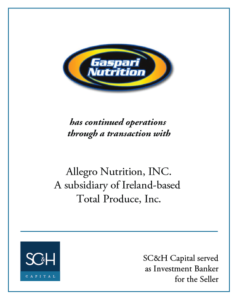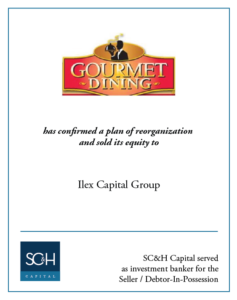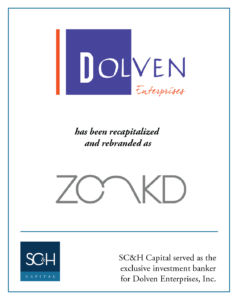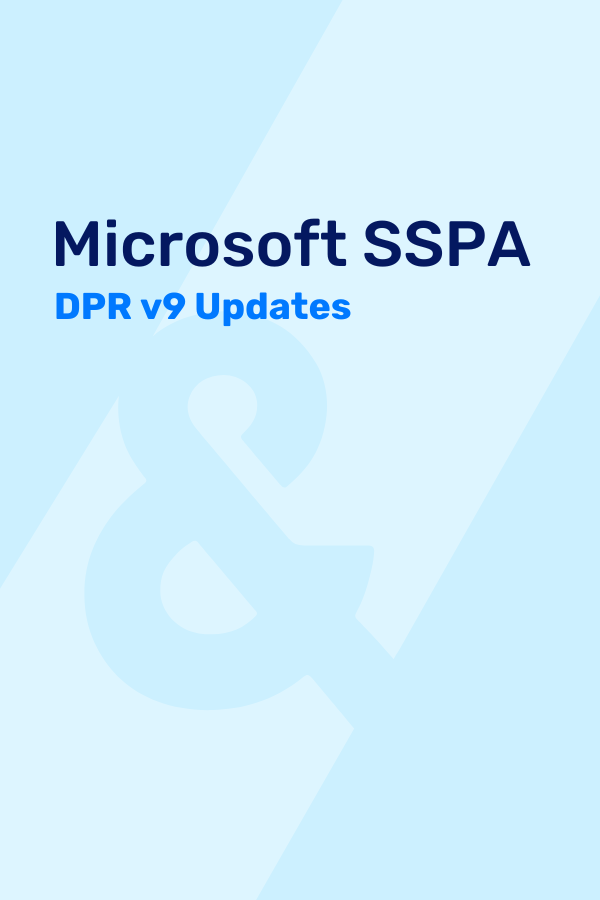Authored by Ken Mann | Managing Director, SC&H Capital Special Situations
When it comes to evaluating the best path forward, companies and their lenders, investors, and advisors are looking first at where in the business life cycle the organization in question currently resides. Is the company a growth-oriented, shiny diamond or a quickly deteriorating melting ice cube? Yet, there is a third classification too often left out of the discussion.
Viewing companies as only either “healthy” or “distressed” can be a costly mistake for the company and its key constituents, namely creditors, owners, employees, and even customers. The third possibility—the “rough diamond”—is a frequently overlooked scenario but demanding of consideration if you are to achieve the best outcome. It’s these companies that have endured a situational instance that has thrown them off-kilter. In the broad world of special situations (or distressed M&A), at first glance, the rough diamond and the melting ice cube may resemble one another but they are quite different—and the approach to finding solutions should be, too.
When it comes to investment banking, all advisors are not created equally. Not all partners will align their process to the business’s unique dynamics and level of distress to obtain its ideal objectives. In fact, there are two reasons why we should not be surprised by this fact:
- Large investment banks ignore anything but the very largest of troubled companies.
- Most of the remaining available consultants frequently lack the experience and sophistication to properly serve the middle-market.
Companies deserve better, so we tailor a process that caters to the unique needs of each scenario.
M&A for Troubled Companies – Melting Ice Cubes
We have all seen the classic case of the melting ice cube—a troubled company rapidly losing value. If the company’s investment banker spends 30-days developing an extensive confidential information package and researching buyers, it leaves the company vulnerable to further dramatic deterioration that could result in there being nothing left to sell. This is one reason why healthy M&A advisors and industry-specific experts often struggle in distressed M&A. In this case, the business needs advisors with experience running an expeditious and broad process; one that finds prospective buyers to participate in a competitive going concern sale process with somewhat limited diligence.
When a company is in this situation, the business needs to find an advisor who can quickly and effectively:
- Package the material attractively
- Develop a buyers list that is sufficiently broad
- Produce and release a teaser to the logical audience
- Answer questions and generate interest
- Appear onsite for inspections
- Solicit and negotiate offers
- Conduct an auction of qualified bidders
All within 60 days, sometimes less.
This is easier said than done. But competition drives price and, when done correctly, value is maximized by getting to the finish line quickly, before the ice cube melts; time is the enemy. An investment banker with a track record of successful accelerated sales—in bankruptcies, foreclosures, receiverships, and assignments for the benefit of creditors—is what the company needs. Our Special Situations team has completed hundreds of these sale processes with great success across diverse industries.
 Take for example, our transaction with Gaspari Nutrition, Inc. With sales falling rapidly, this premium sports nutrition company faced imminent closure or an involuntary bankruptcy filing due to creditor pressures. Our team was able to conduct a comprehensive marketing process that produced an array of potential international buyers and investors, including multiple strategic and financial parties. At a going concern auction, after 50 bids were made, the price of the company had increased by 104% and, as part of the transaction, Gaspari’s founder was able to retain a 30% equity stake and continue his employment with incentives to earn additional equity.
Take for example, our transaction with Gaspari Nutrition, Inc. With sales falling rapidly, this premium sports nutrition company faced imminent closure or an involuntary bankruptcy filing due to creditor pressures. Our team was able to conduct a comprehensive marketing process that produced an array of potential international buyers and investors, including multiple strategic and financial parties. At a going concern auction, after 50 bids were made, the price of the company had increased by 104% and, as part of the transaction, Gaspari’s founder was able to retain a 30% equity stake and continue his employment with incentives to earn additional equity.
The first step any troubled company should take is to realistically determine its runway, how much time it has to find a solution, and then find the right qualified partner to help them navigate the turbulent waters and lead them safely to shore.
M&A for Healthy Companies – Shiny Diamonds
By contrast, a healthy and growing company is a shiny diamond that requires a different approach. A strategic and thoughtful M&A approach is required to optimize the outcome, and an experienced advisor can guide you through the process while ensuring your objectives are met.
SC&H Capital recently served as the exclusive financial advisor to Centretek Solutions, LLC on the divestiture of its digital strategy and development division (“Centretek”) to SPM Marketing & Communications (“SPM”), a portfolio company of Corridor Capital. This is a prime example of a seamlessly executed sell-side M&A process.
“From day one, SC&H Capital acted as an outstanding partner to our agency, navigating us through what was sometimes a complex divestiture process. Their M&A experience and extensive knowledge of the healthcare sector was invaluable,” Jay Miller, CEO, Centretek shared. “SC&H meticulously guided us through the process, from determining a strategy, identifying potential buyers, and negotiating the transaction. Ultimately, they identified the perfect buyer for Centretek, which allowed us to achieve our divestiture goals while providing a future path for success for the division.”
Success in closing healthy M&A deals means providing a tailored M&A process specific to each client that can maximize valuation, increase the probability of closing, and manage potential risks.
M&A for Companies on the Precipice of Distress – Rough Diamonds
This leaves our in-between companies—the “rough diamonds” in need of unique attention. These are good companies that have often suffered a one-time event, like Covid-19, for instance, that landed them in a distressed position. Or perhaps the business has stabilized, and a particular buyer or investor can pay a premium and bring non-economic value that will make a difference in the future of the company. Alternatively, maybe refinancing is the better path; with good financial modeling and strong knowledge of the capital markets, it is infinitely more likely to come to fruition. The main point is that there are situationally based options that can be uncovered if an advisor has the skills and experience to use a hybrid of the two processes described above.
In these types of cases, business owners need advisors capable of deeper and more creative thinking and presenting, like what is seen in a healthy sale. For example, merely building a buyers list is just scratching the surface; the company deserves a partner who can truly understand the value drivers of the business, knows how those relate to each specific buyer/investor/lender and can tailor the pitch to each.

Below are some key questions your advisor should be asking regarding those that make it on to the list of prospective investors:
- Why would they be interested?
- What do we know about their history that helps create leverage?
- What pressures of their own do they face?
- If a fund, is it carrying too much dry powder and/or running out of time to put the LPs’ money to work?
This sort of depth, along with the requisite skills to build a model and tell the story on a customized basis, allows for presentations and negotiations that extend far beyond what was described in the melting ice cube case above. Here, you want a firm that understands the intricacies of insolvency and the creativity of healthy M&A to customize the process to perfectly fit your unique situation. Because our team is comprised of experts in both healthy and distressed M&A, we believe this is a true strength and differentiator for SC&H Capital; one that allows us to deliver superior results.
Examples of our successful process:
 Gourmet Express, a maker of frozen skillet meals, experienced a significant sales increase and outgrew its facility so they began a transition to a new facility. Litigation between the shareholders, however, forced the company to seek a buyer and SC&H Capital was retained to run the sale process. Despite Gourmet being in a chapter 11 proceeding, our team quickly brought several going concern offers to the shareholders, providing each shareholder with significant proceeds, continued employment, and retained equity.
Gourmet Express, a maker of frozen skillet meals, experienced a significant sales increase and outgrew its facility so they began a transition to a new facility. Litigation between the shareholders, however, forced the company to seek a buyer and SC&H Capital was retained to run the sale process. Despite Gourmet being in a chapter 11 proceeding, our team quickly brought several going concern offers to the shareholders, providing each shareholder with significant proceeds, continued employment, and retained equity.
 Dolven, a leading manufacturer of bedding and furniture fabrics, had been embroiled in litigation for three years when our Special Situations team was retained. Instead of a boilerplate sale process, we found creative financing and a resolution to the litigation, allowing the President to retain 100% of the equity. “The process SC&H Capital ran allowed us to explore a number of options and ultimately move forward with a lender that is ready to support our growth strategy.” -Ryan Graven, President and CEO of ZONKD (formerly Dolven Enterprises).
Dolven, a leading manufacturer of bedding and furniture fabrics, had been embroiled in litigation for three years when our Special Situations team was retained. Instead of a boilerplate sale process, we found creative financing and a resolution to the litigation, allowing the President to retain 100% of the equity. “The process SC&H Capital ran allowed us to explore a number of options and ultimately move forward with a lender that is ready to support our growth strategy.” -Ryan Graven, President and CEO of ZONKD (formerly Dolven Enterprises).
It’s in distressed situations like that of the melting ice cube and the diamond in the rough where our Special Situations team can offer transactional solutions to save a company’s legacy, maximize its value, and preserve jobs.
Tailored Transactions Aligned With Client Objectives
We offer a different, thoughtful, and expeditious approach. One that has empowered our team to preserve an estimated 60,000 jobs and complete more than 600 transactions, with about 300 approved by more than 70 bankruptcy courts. This is the type of boutique firm attention, large firm quality execution that our clients receive and deserve. No matter which classification your business falls within—healthy, distressed, or somewhere in between—our experienced team is ready to help.
M&A Solutions for Middle Market Companies
SC&H Capital is dedicated to establishing trusted, long-term relationships with middle-market companies and their advisors. Our engagements are more than just transactional—we focus on understanding and positioning the business in a way that considers the client’s desired objectives and generates the best and greatest number of options.






